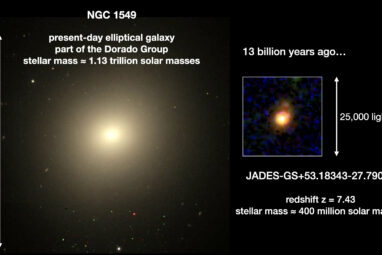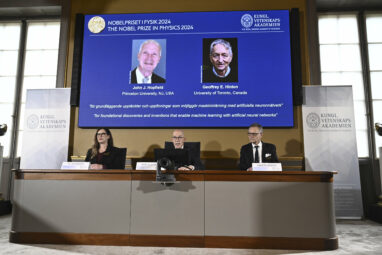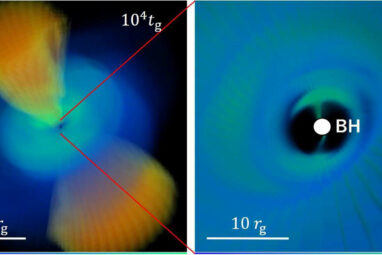The background noise of gravitational waves from orbiting white dwarf stars will be stronger than the noise from binary black...
Astronomers have used data from the European Gaia Space Telescope to discover 55 high-speed stars launched from the young star...
Astronomers have used the NASA/ESA James Webb Space Telescope (JWST) to observe the ‘inside-out’ growth of a galaxy in the...
When three massive objects meet in space, they influence each other through gravity in ways that evolve unpredictably. In a...
A massive black hole has torn apart one star and is now using that stellar wreckage to pummel another star...
Two pioneers of artificial intelligence—John Hopfield and Geoffrey Hinton—won the Nobel Prize in physics Tuesday for helping create the building...
Gas swirls around a black hole due to its intense gravity, forming an accretion disk. These accretion disks, being among...
The James Webb Space Telescope (JWST) is the largest and most powerful space telescope built to date. Since it was...
The James Webb Space Telescope (JWST) is the largest and most powerful space telescope built to date. Since it was...
Out of 225 people awarded the Nobel Prize in physics, only five have been women. This is a very small...
The discovery of an Earth-like planet 4,000 light years away in the Milky Way galaxy provides a preview of one...
In a surprise finding, astronomers using the NASA/ESA Hubble Space Telescope have discovered that the blowtorch-like jet from a supermassive...












